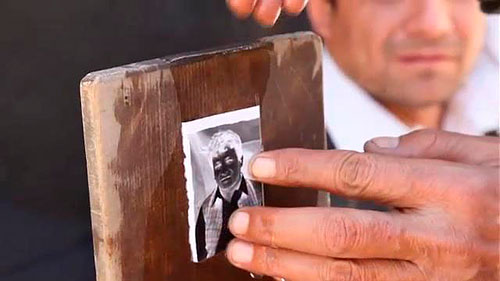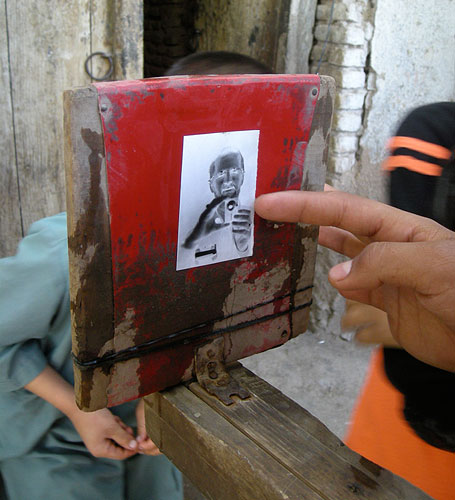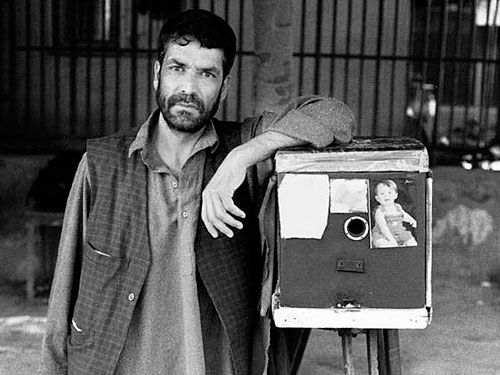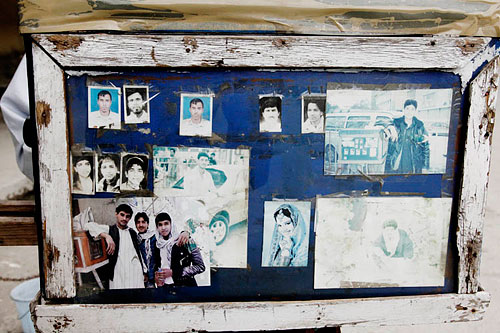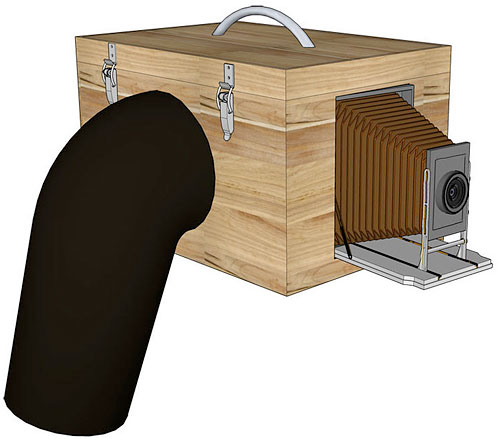The “Instant” Wooden Box Cameras from the Cuban Polaroid to the Afghan “Kamra-E-Faoree”
posted Friday, May 11, 2012 at 3:45 PM EDT
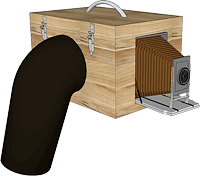 One day while taking pictures in Florence’s Piazza della Signoria, I came upon a strange sight. There was an old man standing beside a huge wooden box camera on an old wooden tripod. I watched with curiosity as an elderly woman come up to the man and asked to have her picture taken.
One day while taking pictures in Florence’s Piazza della Signoria, I came upon a strange sight. There was an old man standing beside a huge wooden box camera on an old wooden tripod. I watched with curiosity as an elderly woman come up to the man and asked to have her picture taken.
Carefully sitting her in a sunny spot near the copy of Michelangelo’s statue of David, he proceeded to fuss in the camera and then getting the woman’s complete attention, quickly uncovered and recovered the camera lens cap. He had just made an exposure and sticking his arms into long light tight sleeves, he produced within a few minutes a B/W negative paper image of the woman.
|
A 'Kamra-e-Faoree' photographer with box camera in Kabul, Afghanistan ca. 1996. Photo courtesy Tony Ashby / Western Australian, via Afghan Box Camera Project. |
With a special attachment in front of the camera lens, he re-photographed the negative image and minutes later had an “instant” positive print for his client.
|
The box camera yields a negative print, which must itself be photographed to create the final positive copy of the image. Photo courtesy of the Afghan Box Camera Project / Vimeo. |
Without being aware of it, what I was watching was a street photography technique that began in the late 19th century and survives to this day. The paper negative/positive process, was invented by William Henry Fox Talbot at the very same time Daguerre introduced his daguerreotypes to the world, in 1839.
|
A Cuban photographer performs the final step in the box camera process. Photo courtesy of Billy Baque / Baque Photography. |
These instant wooden box cameras are still in use but getting rarer. A few years ago, instant wooden box cameras were spotted in Cuba where they are called “Cuban Polaroids.” They are the same design as the Italian camera I saw, and the same as cameras still in use in Bangladesh and Afghanistan.
|
Detail of the Cuban photographer's box camera setup. Photo courtesy of Billy Baque / Baque Photography. |
Before the Taliban’s rise to power, there were hundreds of “Kamra-E-Faoree,” instant camera photographers, in Afghanistan; today there are just two. Before they disappear entirely, photographer Lucas Birk and ethnographer Sean Foley working with Kickstarter.com have been raising funds to try to save the “Kamra” photographers, the images they have made, and the wooden cameras themselves. To this end, they have posted a video of Kamra-E-Faoree street photographer Qalam Nabi at work using his marvelous darkroom/camera in the streets of Kabul.
 |
|
The short film 'How to use a Kamra-e-Faoree' shows Qalam Nabi and his box camera at work. Video by Lukas Birk & Sean Foley, courtesy Afghan Box Camera Project / YouTube. |
Qalam demonstrates the use of the large wooden “Kamra” box camera in the video. It is both a camera and a darkroom. There is a lens mounted on its front end, but no shutter, the exposure being made by removing the lens cap. The photographer focuses an inverted image on a simple ground glass before the film in a simple moveable holder is put in place. There are several other covered openings cut into the box that allow the photographer to focus the image, make the exposure, and then process the exposed paper in two small trays of chemicals in the box. After it is processed the negative paper print is placed in a flip up holder in front of the lens and a second exposure is made. This image of the negative is, of course, positive. The photographer then trims the positive print and gives it to their client.
|
Kamra-E-Faoree street photographer Mia Muhammad, with his box camera. Photo courtesy of the Afghan Box Camera Project / Kickstarter. |
Street photographers like Qalam, my old Italian man, and the Cuban “Polaroid” shooters have always provided an important service to their clients. Among the poorest people in poverty stricken nations, the box photographers offered them low cost photographs in minutes. These small images--about 2x3 inches in size--were exactly what people needed for important things like identity cards and passports.
|
Mia Muhammad's box camera is adorned with photos of friends, and samples of his work. Photo courtesy of the Afghan Box Camera Project. |
It is important to remember that these itinerant street photographers are part of our heritage as photographers and deserve our support. To learn more about these cameras and to learn how to build one of your own—go to the Afghan Box Camera Project (hint, make a donation).
You can also see a collection of over 300 box camera photos gathered from around Afghanistan on the Fading Afghanistan website.
|
Lukas Birk's design for the Box Camera 4.0. Rendering courtesy of Lukas Birk. |

